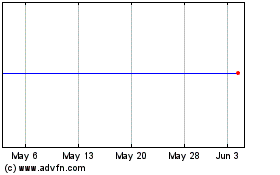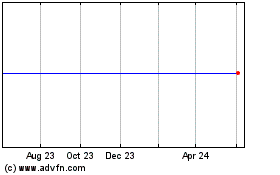UPDATE: Bank Of Montreal 1Q Net Up 18%, Just Ahead Of Analyst Views
02 March 2011 - 4:16AM
Dow Jones News
Bank of Montreal's (BMO) fiscal first-quarter earnings rose
18%,, just beating market expectations, as continued strength in
the Canadian economy led to lower loan-loss provisions and fueled
trading and underwriting activity.
Net income at Canada's fourth-largest bank in assets rose to
C$776 million, or C$1.30 a share, in the quarter ended Jan. 31,
from C$657 million, or C$1.12, a year earlier, the bank said in a
statement. Cash earnings of C$1.32 a share were up from C$1.13 a
year ago and just topped the C$1.31 mean estimate from analysts
polled by Thomson Reuters. Revenue rose 11% to C$3.35 billion.
Bank of Montreal, the third of Canada's biggest six lenders to
report its results, benefited from an economy that expanded at a
faster-than-expected 3.3% pace from October to December. Loan-loss
provisions declined 26%, while personal and commercial revenues in
Canada remained robust, rising 9%, helped by the inclusion of the
Diners Club North American card portfolio. Rallying equity markets
boosted mutual fund sales and underwriting activity. Profit at its
investment bank jumped 21% on higher trading revenue and merger and
acquisition advisory and underwriting fees.
"It was a very solid performance," said Tommy Nguyen, senior
portfolio manager at Palos Management Inc. in Montreal. "Their
market-sensitive revenues were strong, better than expected."
In Toronto Tuesday, BMO is up 1 Canadian cent to C$61.97 on more
than 1.4 million shares traded.
Loan-loss provisions fell to C$248 million from C$333 million a
year earlier.
In Canada, profit at the bank's personal and commercial banking
unit rose 10% to C$444 million from volume growth across most
products and improved net interest margin.
But in the U.S., where BMO has struggled and is expanding
through acquisitions, it set aside more money for bad loans that
reduced profits. Earnings from the bank's P&C U.S. division
fell 17% to C$42 million. The bank attributed the increase to its
provisioning methodology. It said its U.S. business shows "good
momentum" with a 20% increase in checking accounts and a 43% jump
in household accounts.
Toronto-based BMO agreed in December to buy an ailing Wisconsin
lender Marshall & Ilsley Corp. for C$4.1 billion in stock, a
deal that will more than double its U.S. branches to almost 700 and
give it a U.S. footprint as large as its Canadian market. The
acquisition is expected to close in the third quarter.
The bank now intends to raise less than C$400 million in equity
to fund the acquisition, down from the C$800 million it first
announced in December, it said. That's "a distinct positive" for
shareholders as they'll face less dilution, said Barclays Capital
analyst John Aiken.
Profit at BMO Capital Markets rose 21% to C$257 million from
higher trading revenue and advisory fees. In the quarter, the
investment bank helped raise C$50 billion for corporate and
government clients through 158 new debt and equity issues.
The private client division, which includes its mutual fund and
insurance businesses, earned C$153 million, up a
better-than-expected 38%, on market-driven revenue growth and
improved equity prices and bond yields on insurance
liabilities.
Insurance accounted for 47% of the division's profits.
In the quarter, BMO also agreed to acquire Hong Kong-based Lloyd
George Management, a boutique asset manager, that adds about US$6
billion to its assets under management. The transaction is expected
to close early in the fiscal third quarter.
Return on equity was 15.7% versus 14.3%.
BMO estimates its common equity ratio to be 8.2% at Jan. 31,
2011 based on fully implemented Basel III 2019 rules.
Barclays' Aiken says that BMO's results are more solid than
Canadian Imperial Bank of Commerce (CM) and National Bank of Canada
(NA.T), which opened earnings season last week by handily beating
Street expectations. Unlike its smaller peers, BMO had a
higher-than-expected tax rate and didn't benefit from a sequential
increase in securitization fees.
Royal Bank of Canada (RY) and Toronto-Dominion Bank (TD) will
report their results Thursday, followed by Bank of Nova Scotia
(BNS) next week.
-By Caroline Van Hasselt; Dow Jones Newswires; 416-306-2023;
caroline.vanhasselt@dowjones.com
(Judy McKinnon contributed to this article.)
Marshall & Ilsley (NYSE:MI)
Historical Stock Chart
From Jun 2024 to Jul 2024

Marshall & Ilsley (NYSE:MI)
Historical Stock Chart
From Jul 2023 to Jul 2024
